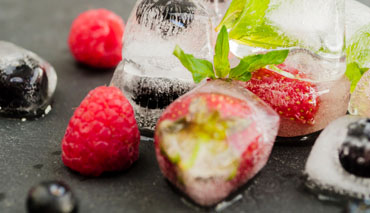Blog image post

Title: **Frozen Food Technology: A Chilly Revolution in Preservation**
**Introduction**
Frozen food technology has revolutionized the way we eat, shop, and live. It's not just about convenience; it's a testament to human ingenuity in preserving the freshness and flavor of food. In this blog, we'll explore the fascinating world of frozen food technology, from its origins to the cutting-edge innovations that keep our favorite meals frosty and delicious.
**The Early Days: Ice Blocks and Natural Freezing**
The concept of freezing food as a method of preservation dates back centuries. In ancient civilizations, people used ice blocks and natural freezing to keep food fresh for longer periods. However, these methods were limited by climate and the availability of ice.
**The Birth of Quick Freezing**
The real breakthrough in frozen food technology came in the early 20th century with the invention of quick freezing by Clarence Birdseye. Birdseye's innovative method involved rapidly freezing food at extremely low temperatures. This process prevented the formation of large ice crystals, which could damage the texture and flavor of the food. Quick freezing locked in the natural flavors and nutrients, resulting in a product that tasted almost as good as fresh.
**The Role of Cryogenic Freezing**
Cryogenic freezing, which uses gases like liquid nitrogen or carbon dioxide, is another key aspect of modern frozen food technology. This method allows for even faster freezing, preserving the quality of food and extending its shelf life. Cryogenic freezing is commonly used for items like ice cream, seafood, and certain fruits and vegetables.
**Packaging Innovations**
Packaging is a critical component of frozen food technology. Advances in packaging materials and techniques have played a significant role in keeping frozen food fresh and safe to eat. Some key packaging innovations include:
- **Vacuum Packaging**: Removing air from packaging helps prevent freezer burn and maintain food quality.
- **Microwaveable Packaging**: Packaging designed for microwave use has become increasingly popular, making it even more convenient to prepare frozen meals.
- **Ziplock and Resealable Bags**: These make it easy to portion out food and protect it from freezer burn.
**Nutrient Preservation**
Frozen food technology focuses on preserving not just flavor but also nutrients. Many frozen fruits and vegetables are processed and frozen at their peak ripeness, ensuring that they retain essential vitamins and minerals. This means that even during the off-season, you can enjoy the nutritional benefits of these foods.
**Innovations in Frozen Meals**
Frozen meals have come a long way from the stereotypical TV dinners of the past. Modern frozen meal technology emphasizes quality and variety. You can now find gourmet frozen meals, international cuisine, and dietary-specific options that cater to a wide range of tastes and dietary needs.
**Sustainability Considerations**
As technology advances, there is a growing emphasis on sustainability in frozen food production. From reducing energy consumption in freezing processes to using eco-friendly packaging materials, the industry is working to minimize its environmental impact.
**Conclusion**
Frozen food technology has transformed the way we preserve and consume food. It has made it possible for us to enjoy a wide variety of foods year-round, reduce food waste, and save time in the kitchen. From Clarence Birdseye's pioneering quick freezing method to today's cryogenic freezing and advanced packaging techniques, frozen food technology continues to evolve, ensuring that we have access to convenient and delicious meals without compromising on quality or nutrition. It's a chilly revolution that has become an integral part of modern life, providing us with the best of both taste and convenience.
